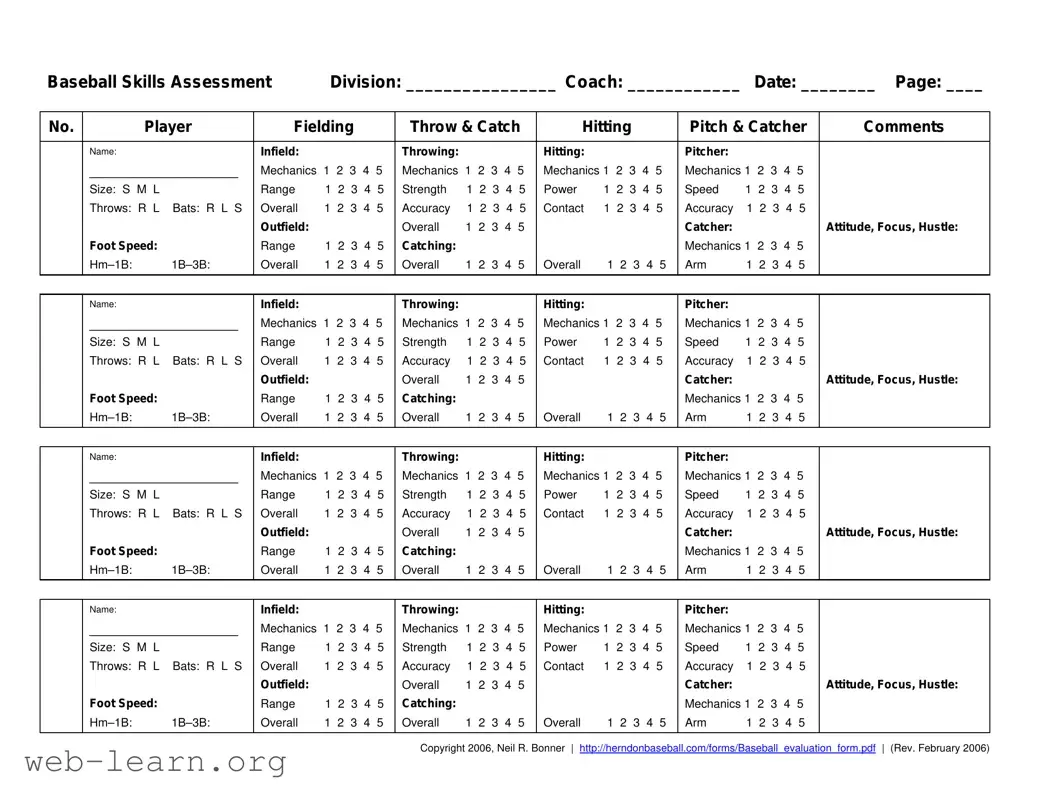Filling out the Baseball Assessment form can be straightforward, but many people still make common mistakes that can affect evaluations. One common error is forgetting to fill in basic identification details such as the division, coach name, and date. These fields are crucial for organizing the assessments. Without this information, it can be challenging to link evaluations to specific players later on.
Another frequent mistake is failing to provide accurate scores for each skill category. Some evaluators skip ratings altogether or give all players the same score, which can dilute the assessment process. It's important to use the five-point scale effectively to denote differences in skill levels. A score of 5 should be reserved for exceptional performance, while a score of 1 indicates a substantial need for improvement.
Inconsistent scoring across similar skills is also an issue. For example, if a player rates a pitcher highly, they should provide comparable scores for other pitching-related aspects, like accuracy and mechanics. Discrepancies in these evaluations can raise questions about fairness and could impact team selections.
Another mistake involves neglecting comments that help explain the ratings. Comments are valuable for providing context around the numbers. Failing to include well-thought-out comments can leave out essential information for coaches reviewing the assessments.
Some evaluators might overlook the attitude, focus, and hustle section entirely. These qualities are critical in a team setting and should not be ignored when assessing a player's overall potential. If evaluators do not take them into account, they could miss out on key team dynamics.
Additionally, skipping out on comments about mechanics during specific skill assessments can weaken the evaluation. Each category demands careful attention to detail. Whether it's fielding or hitting, mechanics significantly influence performance. Ignoring this can provide a skewed view of a player's capabilities.
Lastly, some evaluators fail to adapt their scoring according to the conditions of the tryout. For instance, accounting for an off day or adverse weather can be crucial. Adapting the evaluation process ensures a fair assessment of players’ skills under varying conditions.

